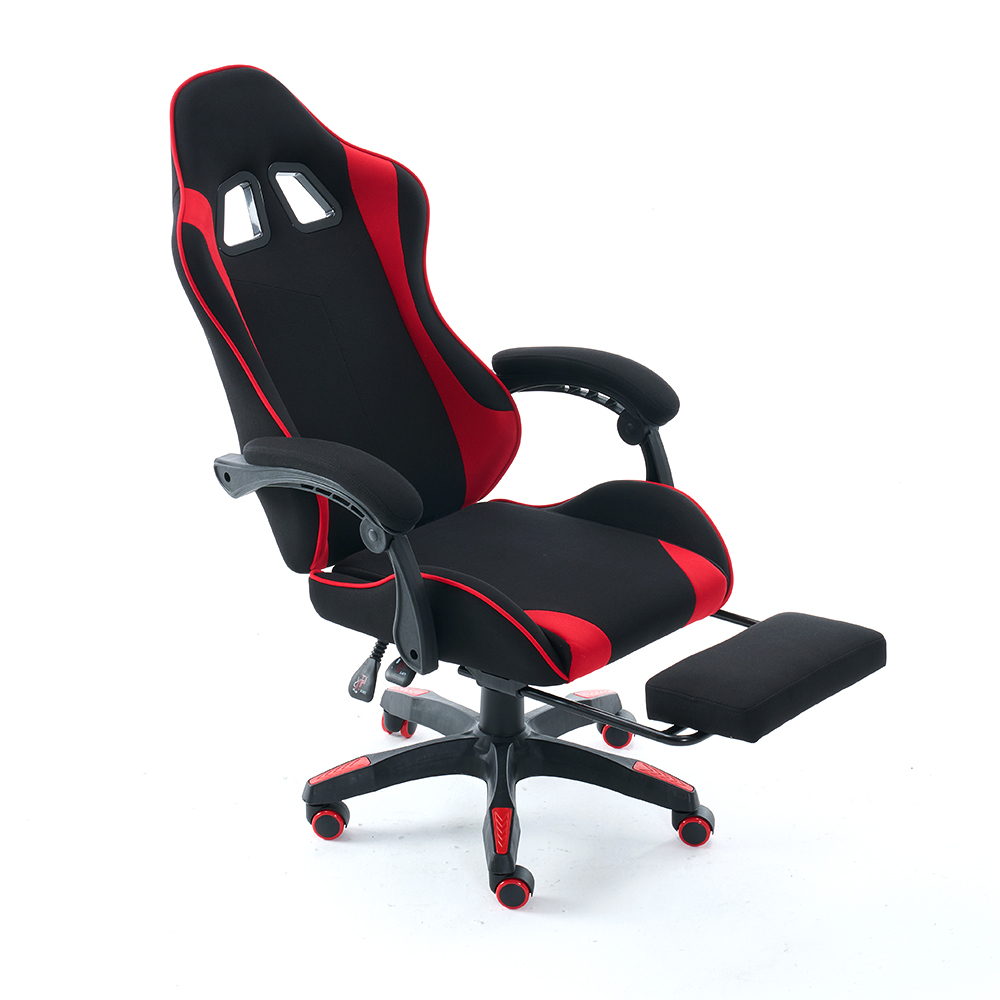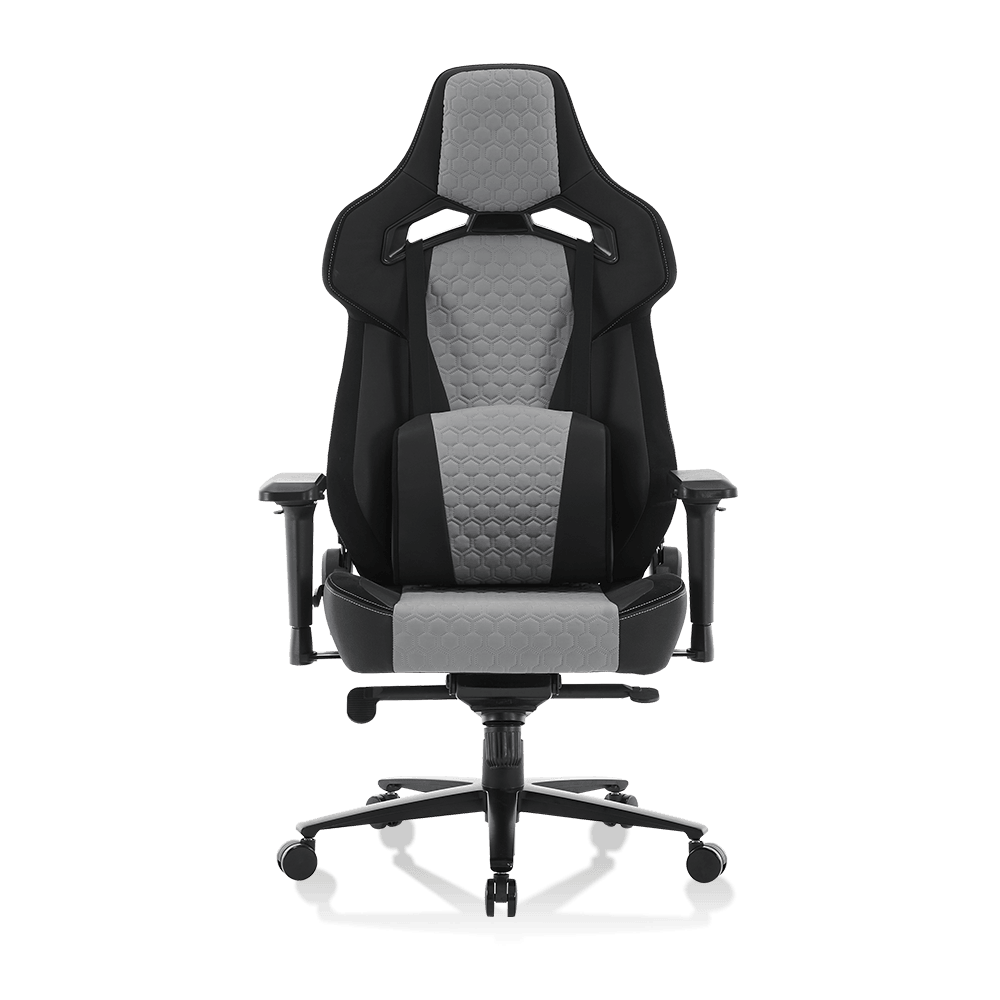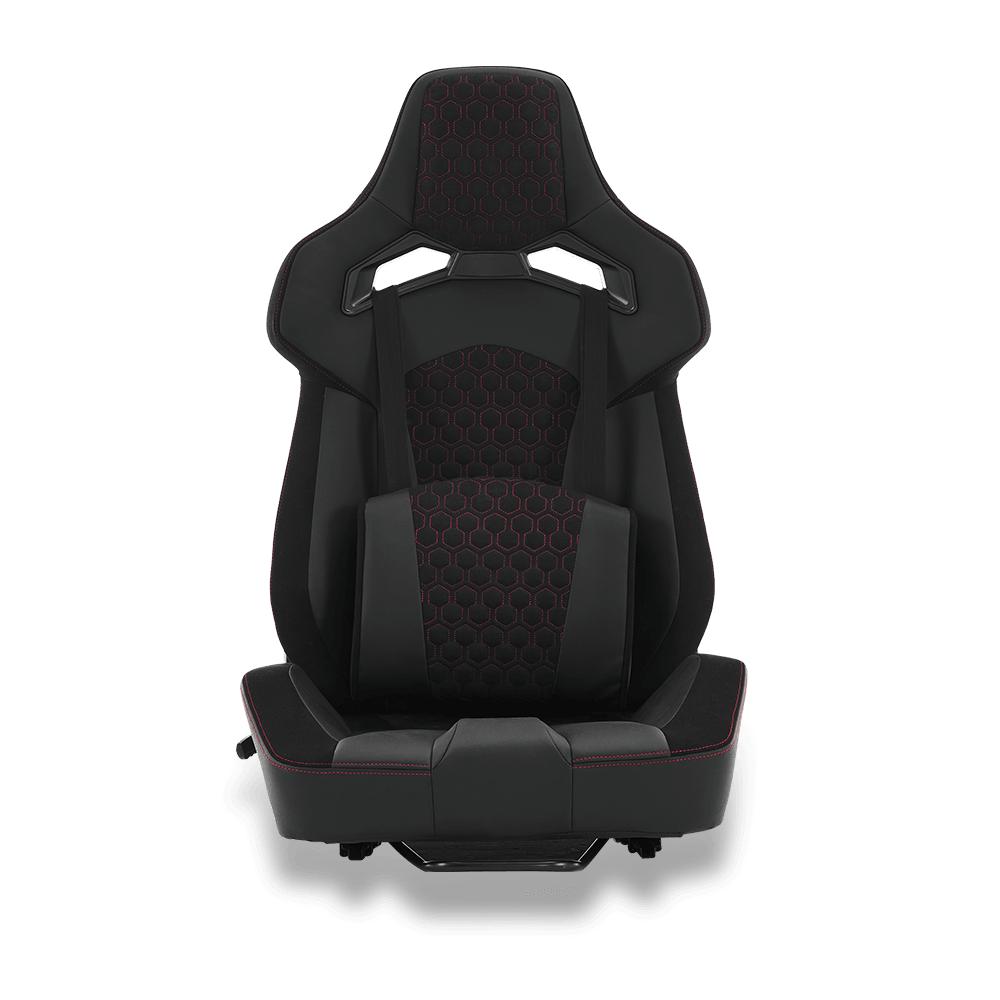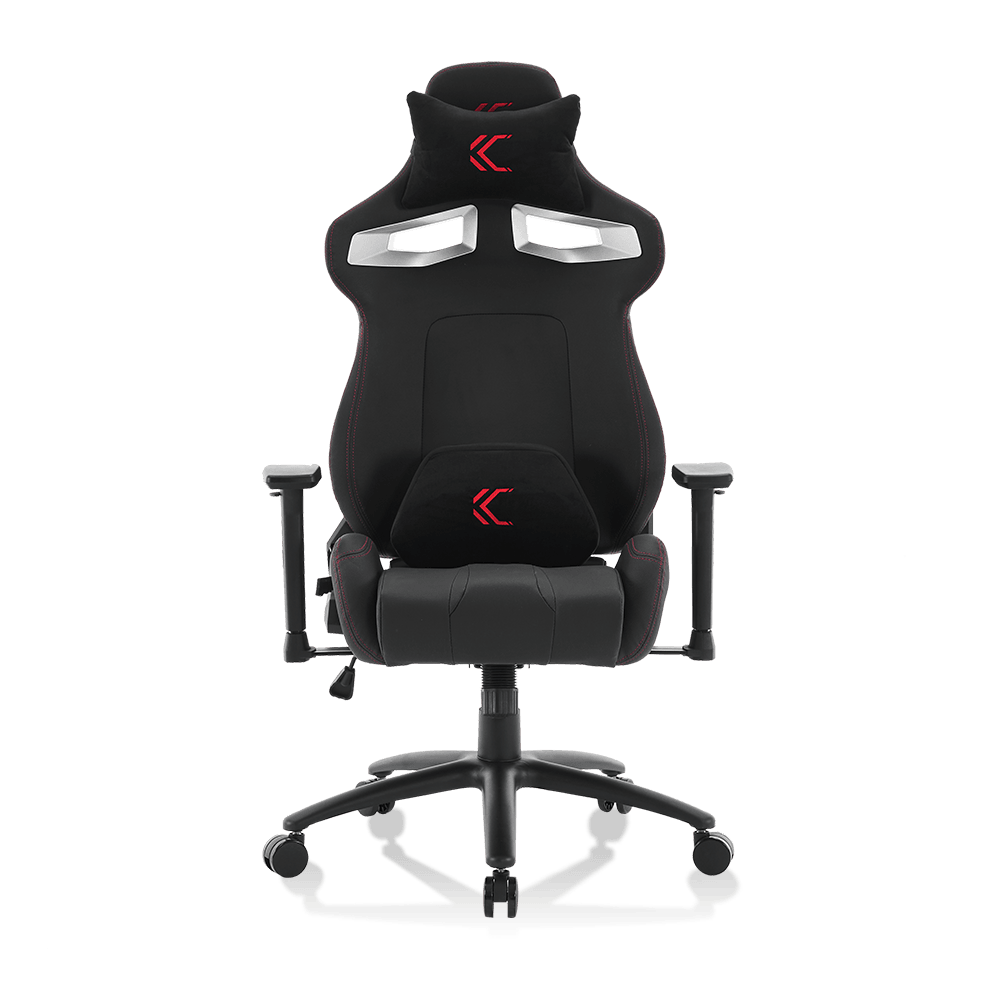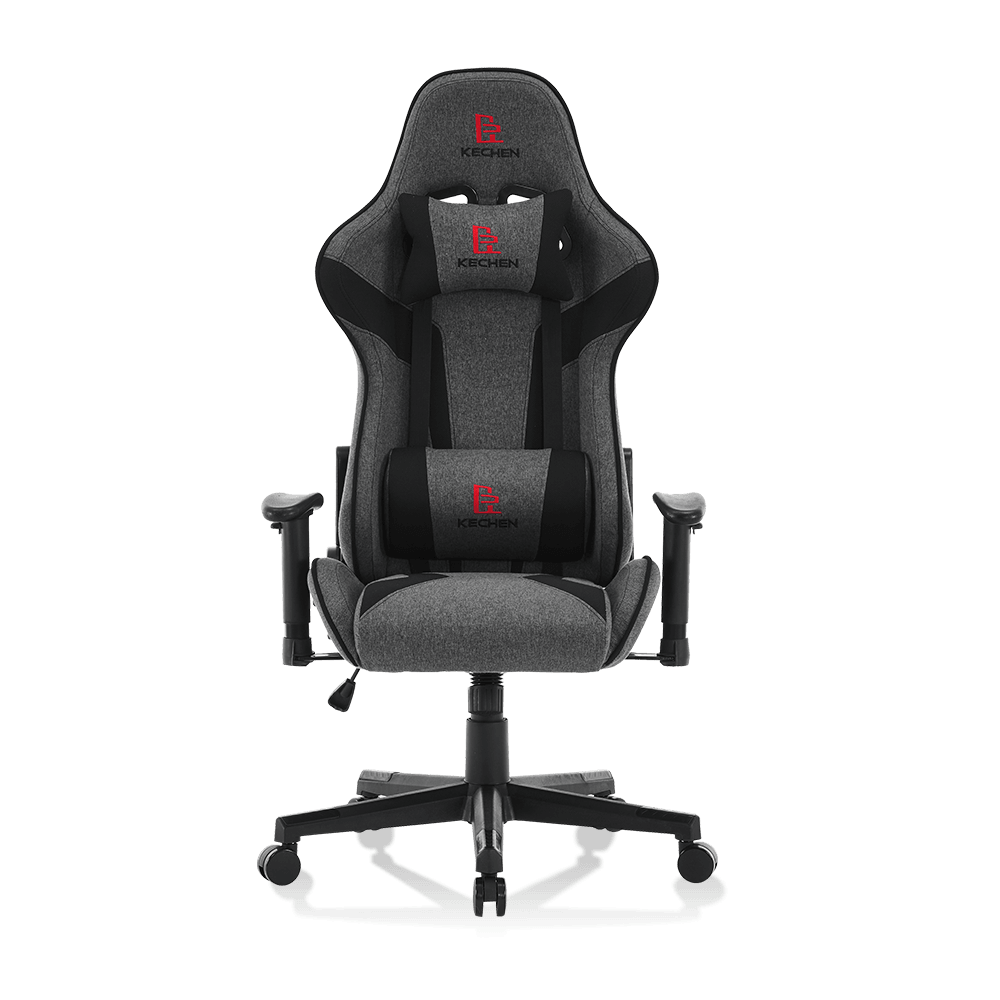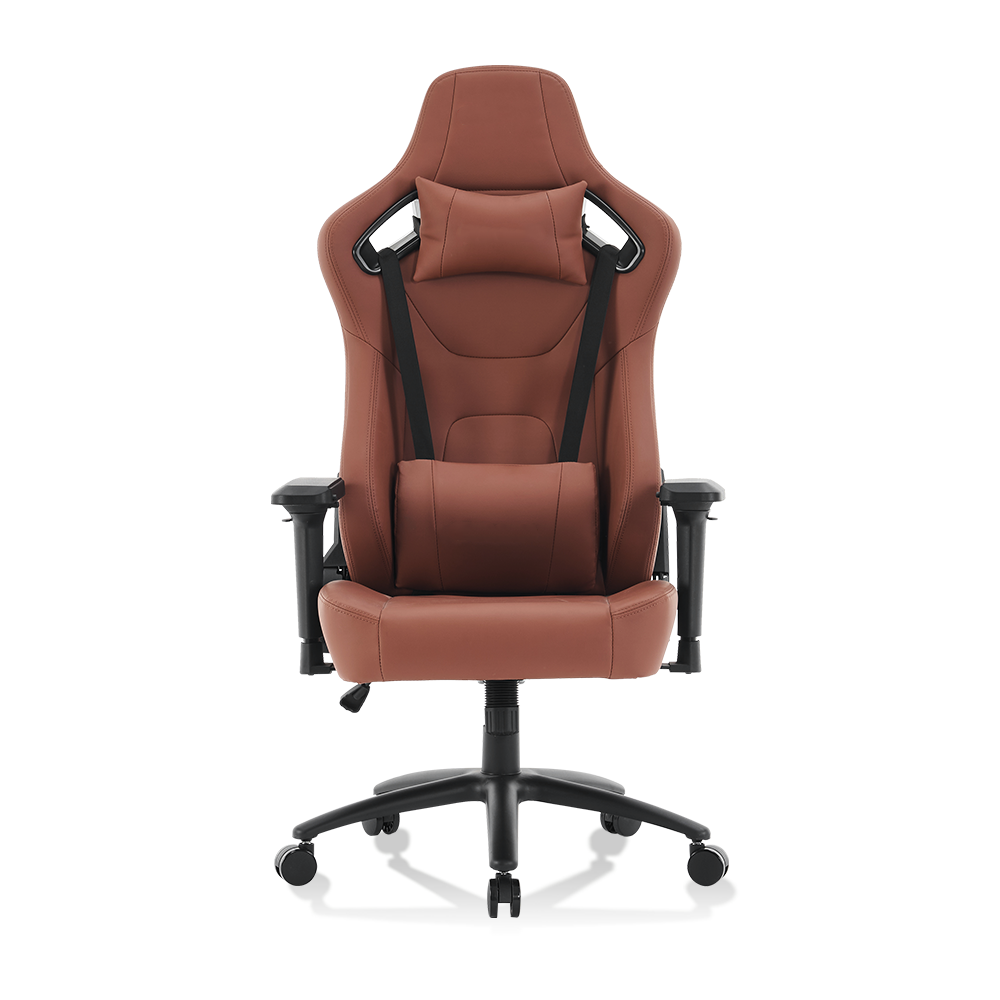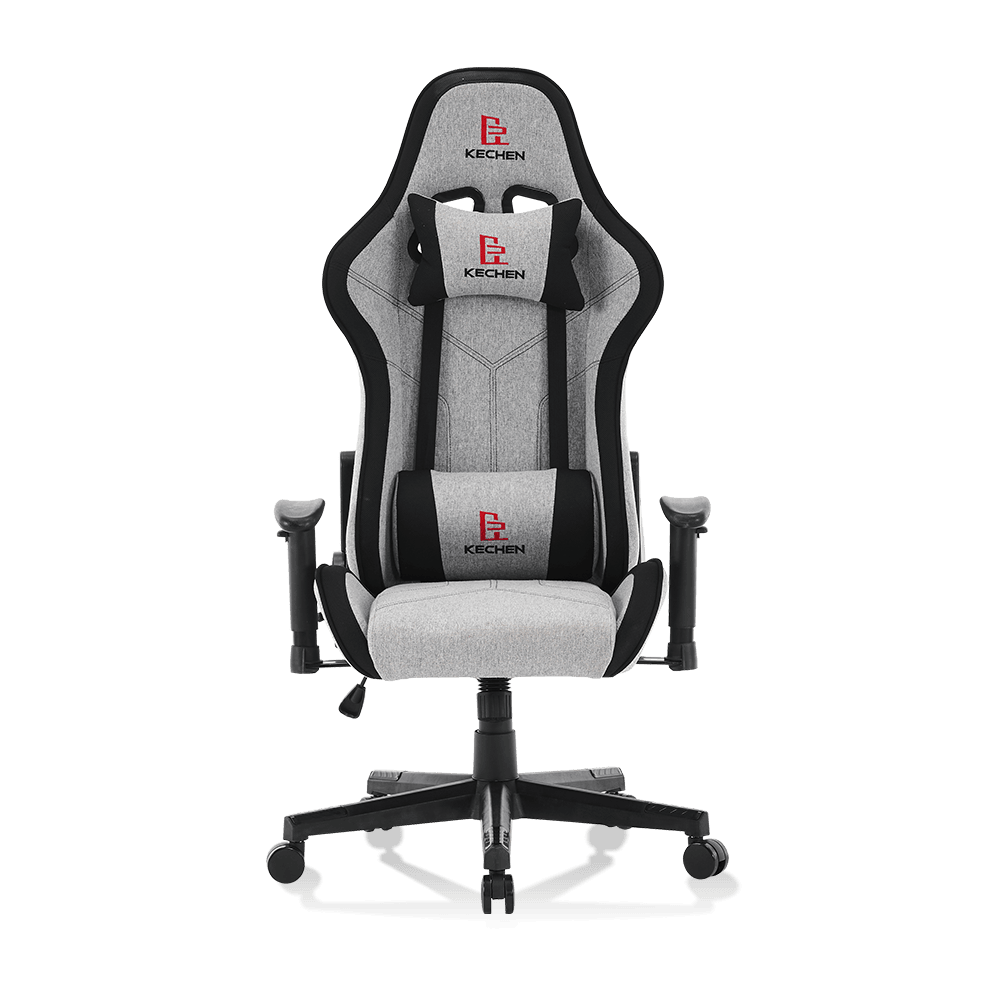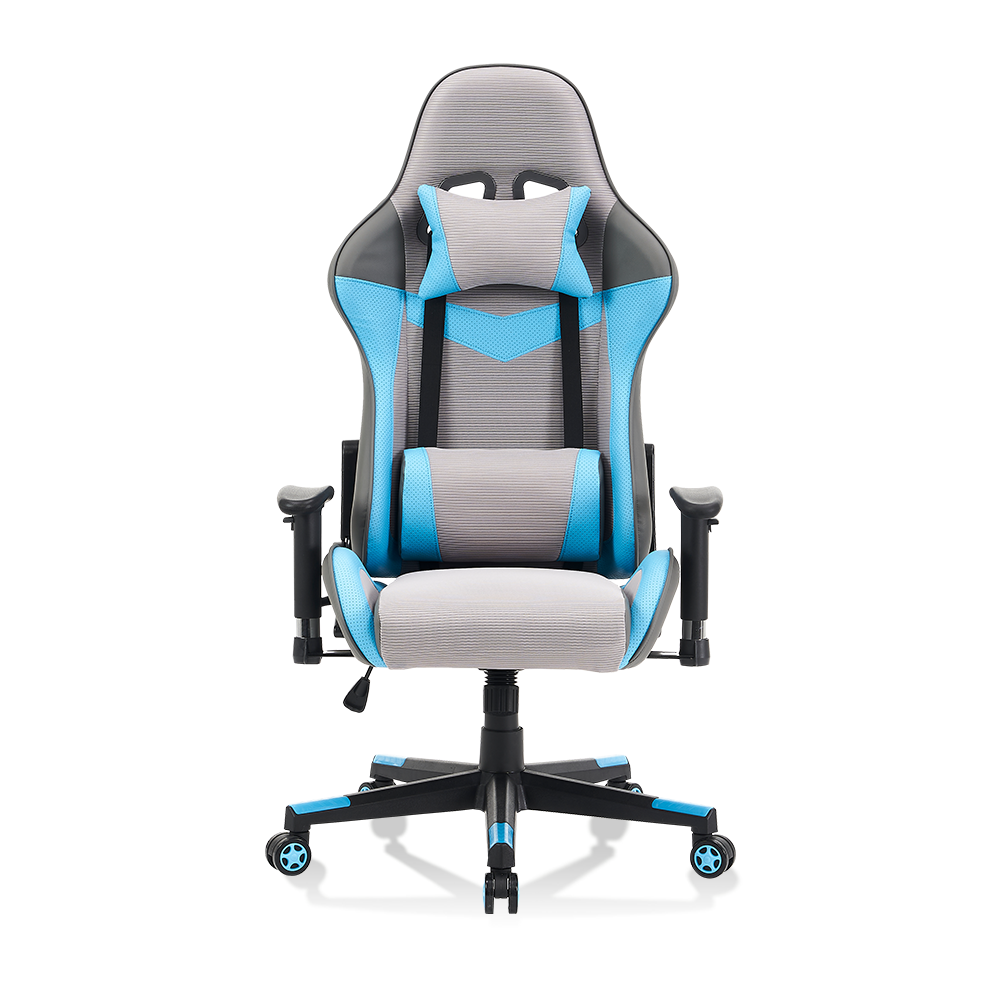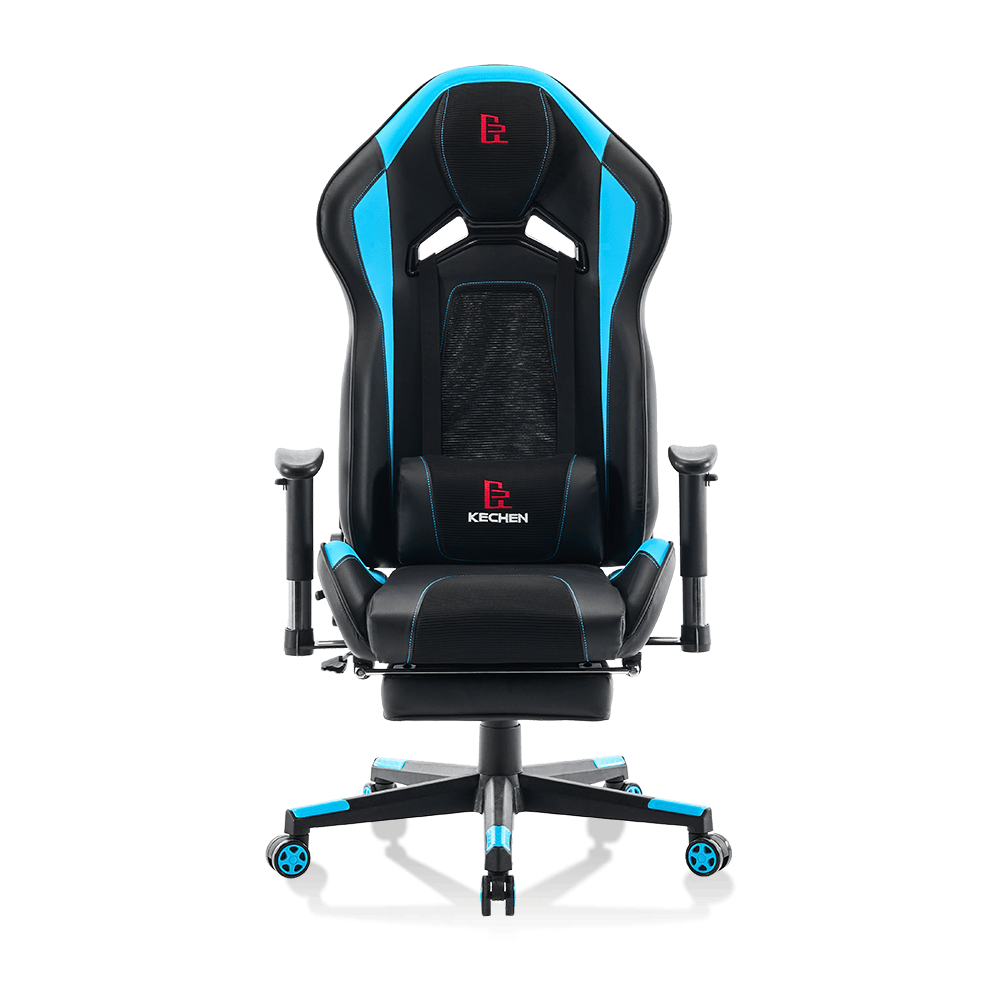When setting up your workspace, choosing the right chair is crucial for comfort, health, and productivity. Two popular options often create a dilemma: the bold, sporty racing gaming chair and the sleek, professional ergonomic computer gaming chairs. While they may seem similar at a glance, they are designed with fundamentally different priorities. This comprehensive guide breaks down the key distinctions in design, functionality, and ideal use cases to help you make an informed decision that best supports your body and your activities.
5139 Gaming chair with footrest, adjustable swivel chair
1. Design Philosophy and Aesthetic Appeal
The most immediate difference lies in their visual design and the underlying philosophy. Racing gaming chairs draw direct inspiration from bucket seats found in high-performance vehicles, emphasizing a dynamic and immersive experience. In contrast, ergonomic office chairs are rooted in clinical and corporate studies focused solely on posture support and minimizing musculoskeletal strain over long periods. This fundamental difference in origin shapes every aspect of their construction.
- Racing Gaming Chairs: Feature bold color schemes, contrasting stitching, and often include branded logos and flashy accents. The design goal is to create an exciting, "gamer" aesthetic that enhances the gaming environment.
- Ergonomic Office Chairs: Prioritize a minimalist, professional, and unobtrusive look. They typically come in neutral colors like black, grey, or white, designed to blend seamlessly into a home office or corporate setting.
- Hybrid Models: Recognizing the demand for both style and substance, manufacturers like Zhejiang Anji Kechen Furniture Co., Ltd. are increasingly developing chairs that integrate the robust, aesthetic appeal of gaming chairs with the scientifically-validated support features of ergonomic office chairs.
2. Lumbar and Postural Support Systems
This is arguably the most critical differentiator for long-term health. The approach to supporting the spine, particularly the lumbar region, varies significantly between the two chair types and is a key factor for anyone comparing ergonomic chair vs gaming chair for back pain.
- Racing Gaming Chairs: Typically employ a "one-size-fits-all" approach using separate, removable pillows for lumbar and cervical (neck) support. While adjustable in height, these pillows provide a generalized, external support that may not perfectly contour to every user's spine.
- Ergonomic Office Chairs: Often feature built-in, adjustable lumbar support mechanisms. This can be a dial, lever, or tension knob that allows the user to fine-tune the precise height and depth of the support directly from the chair's backrest, promoting a more integrated and personalized spinal alignment.
Lumbar Support Comparison
The following table highlights the core differences in how these chairs support your lower back.
| Feature | Racing Gaming Chair | Ergonomic Office Chair |
| Primary Support Method | Detachable lumbar pillow | Built-in, adjustable mechanism |
| Adjustability | Height adjustment only | Height and depth/prominence |
| Integration | External add-on | Integrated into backrest design |
| Ideal For | General comfort and style | Targeted, clinical postural support |
3. Material Selection and Long-Term Comfort
The materials used directly impact breathability, durability, and how the chair feels during extended sitting sessions. This is a crucial consideration for users looking for a breathable ergonomic chair for long sessions.
- Racing Gaming Chairs: Heavily rely on synthetic PVC or PU leather. This material is durable, easy to clean, and contributes to the sporty aesthetic. However, it is not very breathable, which can lead to heat and moisture buildup during long, intense use.
- Ergonomic Office Chairs: Frequently utilize high-quality mesh backrests or advanced fabric upholstery. Mesh is exceptionally breathable, promoting air circulation to keep the user cool. High-end fabrics are also breathable and can be more comfortable against the skin over time.
- Cushioning: Both chair types use high-density foam, but the design focus may differ. Gaming chairs may have firmer, more defined bolsters, while office chairs often prioritize even weight distribution to prevent pressure points.
4. Adjustability and Customization Features
The ability to fine-tune a chair to your body's exact dimensions is the cornerstone of true ergonomics. Here, the gap between the two categories can be significant, especially when considering the needs of a tall person ergonomic office chair.
- Recline Function: Both chairs typically recline. Gaming chairs often feature a deeper recline range (up to 180 degrees) and may include a locking mechanism at various angles, ideal for resting. Office chairs usually have a more moderate recline focused on dynamic sitting while working.
- Armrests (3D vs 4D): A key differentiator. Many gaming chairs offer basic 2D (up/down) or 3D (up/down, in/out, pivot) armrests. High-end ergonomic office chairs often provide 4D armrests, adding forward/backward slide adjustment, allowing for a perfect alignment with the desk and the user's elbows.
- Seat Depth and Height: A premium feature in ergonomic office chairs is adjustable seat depth (seat slide), which is critical for tall users to get proper thigh support without pressure behind the knees. This feature is rare in standard gaming chairs.

Adjustability Feature Breakdown
This comparison outlines the standard and premium adjustments available.
| Adjustment Feature | Common in Gaming Chairs | Common in Ergonomic Office Chairs |
| Seat Height | Yes | Yes |
| Armrest Height | Yes (2D/3D) | Yes (4D is common in high-end models) |
| Backrest Recline | Yes, often with lock | Yes, often with tension control |
| Lumbar Adjustment | Pillow height | Integrated height & depth |
| Seat Depth | Rare | Common in mid-to-high-end models |
| Headrest | Pillow, often adjustable | Integrated, highly adjustable or none |
5. Ideal Use Case: Which Chair is Right for You?
Your primary activity should be the deciding factor. The best chair is the one that best supports the way you spend most of your time sitting, making the choice between a gaming chair for long hours versus an office chair a matter of priority.
- Choose a Racing Gaming Chair If: Your primary use is gaming, especially shorter, more intense sessions. You value a bold, immersive aesthetic, enjoy a deep recline for occasional relaxation, and may not suffer from pre-existing back issues that require highly specific lumbar support.
- Choose an Ergonomic Office Chair If: Your primary use is work, studying, or any task requiring 8+ hours of seated focus. You prioritize breathability, precise, clinical postural support, and a professional appearance. This is also the better choice for individuals with chronic back or neck pain.
- The Best of Both Worlds: The market is evolving, with companies focusing on ergonomic science, like Zhejiang Anji Kechen Furniture Co., Ltd., creating hybrid chairs. These products aim to offer the appealing design of a gaming chair but are built upon a foundation of advanced ergonomics, featuring 4D armrests, built-in lumbar support, and breathable materials, effectively bridging the gap between the two categories.
FAQ
Can a gaming chair be as good for your back as an ergonomic office chair?
While a high-quality gaming chair is certainly better for your back than a dining chair or a poorly designed stool, it typically does not match the targeted, scientific support of a dedicated ergonomic computer gaming chairs. The use of separate lumbar pillows versus integrated, adjustable mechanisms is the key differentiator. For users without specific back issues, a good gaming chair may be sufficient. However, for those with existing pain or who require rigorous postural support for 8+ hours of work, a high-end ergonomic office chair is generally the superior choice for spinal health.
I work from home and game at night. Which chair should I buy?
This is a common scenario, and your choice depends on the balance of your activities. If your work is your primary and most demanding activity, an ergonomic office chair will better support your productivity and health throughout the workday, and will still be perfectly functional for gaming. If your gaming sessions are your primary focus and are longer/more intense than your work hours, a premium gaming chair might be more appealing. For the ultimate solution, look into the emerging category of hybrid chairs that are designed to excel in both environments, offering ergonomic integrity without sacrificing a compelling aesthetic.
Why are ergonomic office chairs often more expensive than gaming chairs?
The higher cost of many ergonomic office chairs is attributed to the investment in research, development, and advanced mechanisms. Features like patented lumbar systems, 4D armrests, synchronized tilt mechanisms, and high-quality, breathable mesh materials are more complex and expensive to engineer and manufacture. While you can find expensive gaming chairs and budget office chairs, the price point of a high-end ergonomic chair reflects its focus on clinical-grade support, durability, and long-term health benefits, which requires rigorous testing and quality materials, a principle central to the manufacturing process at specialized facilities.
Are the bucket seat bolsters on gaming chairs bad for you?
The high, prominent bolsters on the seat and backrest of a racing-style gaming chair can be problematic for some users. While they are designed to hold the driver in place during sharp turns in a car, this feature is less relevant for a stationary chair. For wider-bodied individuals, the side bolsters on the seat can create pressure points on the hips and thighs. Similarly, the shoulder bolsters can sometimes push the shoulders forward into a hunched position if they are too narrow for the user. In contrast, most ergonomic office chairs feature a flatter seat pan and a more open backrest to accommodate a wider range of body types without restrictive bolstering.



 Español
Español 日本語
日本語 Deutsch
Deutsch